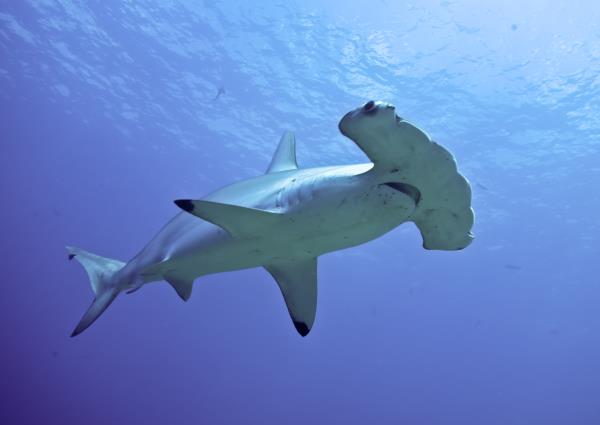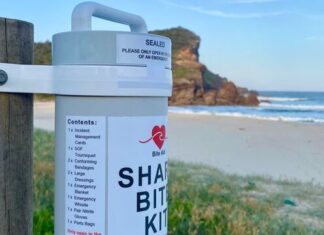By JONATHON HOWARD
TWO juvenile hammerhead sharks which raised alarm bells at Noosa Main Beach on Sunday, posed zero risk to beach goers according to officials from Noosa Heads Surf Life Saving Club.
The shark alarm was pulled by Noosa Heads’ Senior Sergeant Steve McReight at about 10am and prompted anyone in the water to exit as the presence of the two sharks became known.
Snr Sgt McReight said he was “very pleased” with the fast actions of beach goers exiting the water.
Noosa Heads Surf Life Saving Club captain Joe Cirillo, said people’s safety was the number-one priority.
“The shark alarm was pulled in order to clear the water until the sharks had left the area,” he said.
Mr Cirillo said life savers used jet skis to monitor and divert the two small hammerheads out to sea.
“The sharks were only babies, but we felt it was best to clear the water as they passed and all up it took about 20 minutes,” he said.
Life savers carried out several sweeps of the area and soon after declared it safe for people to return to the water.
Most hammerhead species are fairly small and are considered harmless to humans, according to National Geographic records.
However, the great hammerhead’s enormous size – up to 20 feet (six metres) in length – and fierceness make it potentially dangerous, though few attacks have been recorded.
The last recorded hammerhead attack on a human was on 29 December, 2002 at the Great Barrier Reef (near Upolu Bay).
Diver Lienne Schellekens was snorkelling off the reef when she received non-life-threatening left arm lacerations from what was described as a hammerhead shark.
There have been five reported hammerhead attacks in Australia since recording started and zero deaths due to hammerheads.
The squat-headed hammerhead (Sphyrna mokarran) and the scalloped hammerhead (Sphyrna lewini) are listed as endangered and the small eye hammerhead (Sphyrna tudes) and the smooth hammerhead (Sphyrna zygaena) are listed as vulnerable on the IUCN Red List of Threatened Species.







